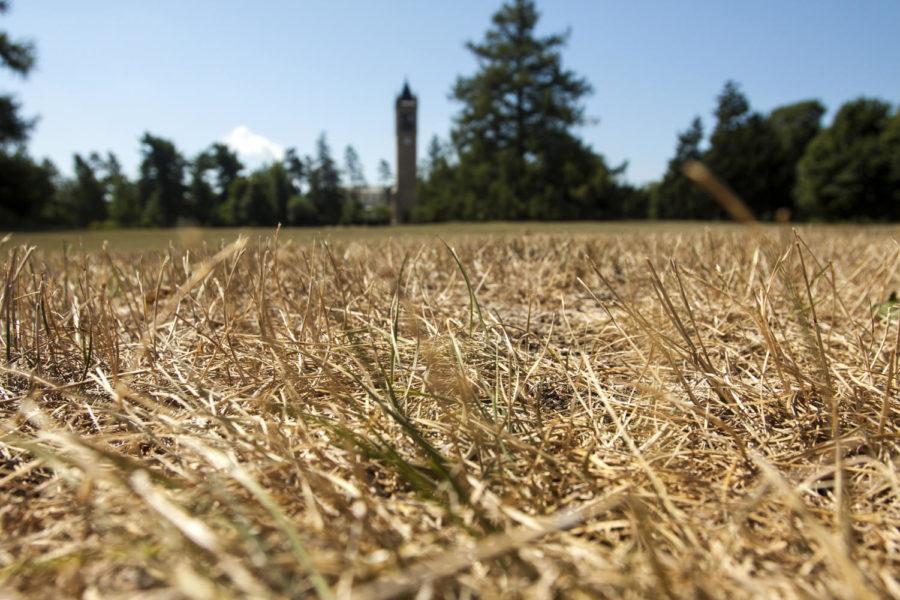Iowa State campus still recovering from drought
Photo: Megan Wolff/Iowa State Daily
The grass of Central Campus has been affected by this summer’s heat and drought.
November 2, 2012
The lack of rain this summer has not gone unnoticed. The 2012 drought has had major effects on crops and campus alike.
Dennis Todey, associate professor of agricultural and biosystems engineering at South Dakota State University, gave a lecture to meteorologists, climatologists, professors and students about the drought Thursday at Agronomy Hall.
“We had flags going up last fall,” Todey said. “Less than 25 percent of average precipitation [was received] last fall in South Dakota, Minnesota and Iowa,” Todey said. “Going into spring, temperatures were much higher than normal. We climatologists were very scared.”
Abnormally warm weather was welcomed by the average person this spring. However, farmers had reason to be frightened by increased heat.
“With increased temperatures, it kicks up crop water use early in the year. You really set your stage for problems early as you go along,” Todey said. “All of the states in the Midwest reported poor or very poor condition crops. It is very rare to have this percentage of poor to very poor conditions.”
The temperature lows of March were about 20 degrees above the average high temperatures. Those high sorts of temperatures create countless complications for crops. Des Moines, in fact, set the record for most days above 80 degrees this summer. Iowa as a state came in second as having the driest summer this year, with Nebraska taking first.
In addition to affecting crops, college campuses in Iowa have also suffered from the lack of regular rainfall. The Live Green! Initiative is taking action in an attempt to help revive Iowa State’s bragging rights as a nationally ranked beautiful campus.
“As we all know, we are currently in a situation where we’re well below average as far as precipitation,” said Merry Rankin, director of sustainability. “Our natural vegetation expectations [for rain] has made it challenging for us to maintain sites.”
Live Green coordinated with the Government of the Student Body for a creative, yet effective way to get the word out to students as to how they can help restore campus. Eye-catching signs were placed around areas on campus where the vegetation is suffering. Witty slogans were written to cause a chuckle and make a point.
“We wanted it to be something educational, but also engaging and having all of campus acting as a team,” Rankin said.
The funny phrases were dispersed all through campus, including Richardson Court, central campus, and in front of Carver, where a noticeable path has been worn to dirt.
“Go to class. Call your mom. Use the sidewalks,” one sign said to encourage students to not walk on the grass.
Students are encouraged to use sidewalks, but Rankin understands why a walk through the grass is tempting.
“Central Campus is such a beautiful area and it’s so fun to go out and enjoy this green space,” Rankin added. “We want to encourage our students to enjoy that green space, but this particular year, because of the drought situation, we are encouraging people to be cognitive of giving the green space a bit of a break.”

















